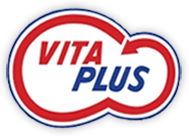
5 areas to focus on for buck health
 By Sarah Adamson, Vita Plus dairy goat specialist
By Sarah Adamson, Vita Plus dairy goat specialist
With breeding season right around the corner, buck health should be at the top of everyone’s mind. While a buck is often easy to care for throughout the year, we want to give him extra attention when it comes time to perform and make sure he is healthy and capable of breeding all the does in his pen. Understanding buck health can go a long way to creating a successful breeding season. Here are five areas you should focus on when evaluating buck health.
The body
Bucks are known to have a very healthy amount of hair, but this can make it difficult to tell their body condition. Get your hands on them. Run your hands over their back, topline and sides. Do they feel like they are carrying good fleshing? Can you feel every bone as you go down?
While the month before breeding season may not be the most ideal time to have a buck lose weight, you can put weight back on them if needed. Going into breeding season with good body conditioning plays a key part in a successful breeding program. If you choose to shave your bucks to monitor their weight better, make sure you leave enough time for the hair to grow back before cold weather hits.
The eyes
What do their eyes look like? Are their eyes alert, or are they dopey and not very attentive? Check their inner eyelids and gums for correct coloration. White or light pink eyelids and gums can indicate internal parasites or lice.
- Internal parasites (worms)
Internal parasites can be detrimental to a buck’s health and can cause mortality if severe enough. Worms can be detected by checking eyelid and gum color, or in fecal samples. If worms are suspected, work with your veterinarian to create the best treatment. - Lice
Check for lice annually (or more regularly if weight loss is noticed). The most common places to look for lice are on their rump and under their front legs. Work with your veterinarian on the best line of treatment. After the first treatment, check the animals again. If the lice are significantly prevalent, one treatment may not be sufficient. Keep in mind, if one animal in a pen has lice, chances are multiple do.
 Behavior
Behavior
Do you know how your bucks behave on a regular basis? Knowing a buck’s typical behavior is important to set a baseline and easily determine if he is acting abnormal. Is his appetite the same? Is he bloated, lethargic, sluggish, etc.?
Nutrition
Just because bucks are normally easy-going does not mean they don’t occasionally need extra nutritional attention, especially during breeding season. Make sure they are consuming ideal levels of protein, calories and overall feed to maintain a healthy body condition. Removing them and penning them alone for a short period of time away from does may increase their interest in feed.
Hoof care
When was the last time your bucks had their hooves trimmed? Remember, during breeding, bucks must be sure-footed and able to lunge. If he has poor feet and legs due to poor hoof care, he may not give you the conception rate you want. Trim their hooves before they get put to work, and ideally more regularly than that.
Proper buck care is a fundamental part of a successful breeding program and prospering farm. Creating a buck health checklist can help remind you what areas to check more frequently and help set your bucks up for a successful breeding season.
About the author: Sarah Adamson is the Vita Plus dairy goat specialist. She grew up in Milton, Wisconsin, on her family’s 250-head dairy goat farm. She attended the University of Wisconsin-Platteville and received her bachelor’s degree in animal science with an emphasis on dairy science. Adamson worked on the UW-Platteville dairy farm while in school and then as a lead herdsman for a dairy goat farm in northeast Wisconsin before joining Vita Plus in 2018.
| Category: |
Buck health Dairy Goat Performance Reproduction |

